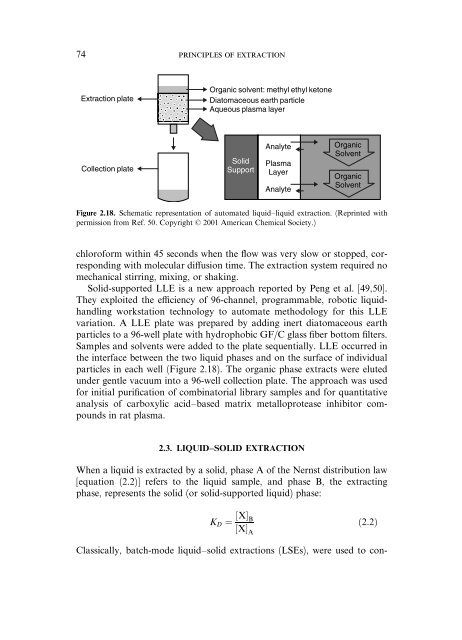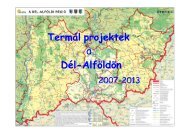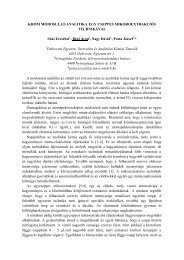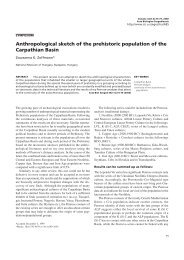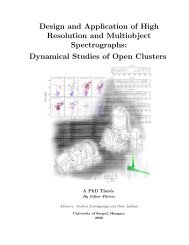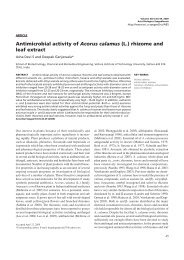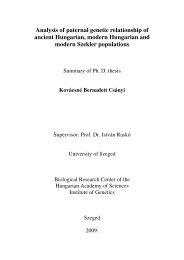principles of extraction and the extraction of semivolatile organics ...
principles of extraction and the extraction of semivolatile organics ...
principles of extraction and the extraction of semivolatile organics ...
Create successful ePaper yourself
Turn your PDF publications into a flip-book with our unique Google optimized e-Paper software.
74 <strong>principles</strong> <strong>of</strong> <strong>extraction</strong><br />
Extraction plate<br />
Collection plate<br />
Organic solvent: methyl ethyl ketone<br />
Diatomaceous earth particle<br />
Aqueous plasma layer<br />
Solid<br />
Support<br />
chlor<strong>of</strong>orm within 45 seconds when <strong>the</strong> flow was very slow or stopped, corresponding<br />
with molecular di¤usion time. The <strong>extraction</strong> system required no<br />
mechanical stirring, mixing, or shaking.<br />
Solid-supported LLE is a new approach reported by Peng et al. [49,50].<br />
They exploited <strong>the</strong> e‰ciency <strong>of</strong> 96-channel, programmable, robotic liquidh<strong>and</strong>ling<br />
workstation technology to automate methodology for this LLE<br />
variation. A LLE plate was prepared by adding inert diatomaceous earth<br />
particles to a 96-well plate with hydrophobic GF/C glass fiber bottom filters.<br />
Samples <strong>and</strong> solvents were added to <strong>the</strong> plate sequentially. LLE occurred in<br />
<strong>the</strong> interface between <strong>the</strong> two liquid phases <strong>and</strong> on <strong>the</strong> surface <strong>of</strong> individual<br />
particles in each well (Figure 2.18). The organic phase extracts were eluted<br />
under gentle vacuum into a 96-well collection plate. The approach was used<br />
for initial purification <strong>of</strong> combinatorial library samples <strong>and</strong> for quantitative<br />
analysis <strong>of</strong> carboxylic acid–based matrix metalloprotease inhibitor compounds<br />
in rat plasma.<br />
2.3. LIQUID–SOLID EXTRACTION<br />
When a liquid is extracted by a solid, phase A <strong>of</strong> <strong>the</strong> Nernst distribution law<br />
[equation (2.2)] refers to <strong>the</strong> liquid sample, <strong>and</strong> phase B, <strong>the</strong> extracting<br />
phase, represents <strong>the</strong> solid (or solid-supported liquid) phase:<br />
KD ¼ ½XŠ B<br />
½XŠ A<br />
Analyte<br />
Plasma<br />
Layer<br />
Analyte<br />
Organic<br />
Solvent<br />
Organic<br />
Solvent<br />
Figure 2.18. Schematic representation <strong>of</strong> automated liquid–liquid <strong>extraction</strong>. (Reprinted with<br />
permission from Ref. 50. Copyright 6 2001 American Chemical Society.)<br />
ð2:2Þ<br />
Classically, batch-mode liquid–solid <strong>extraction</strong>s (LSEs), were used to con-


